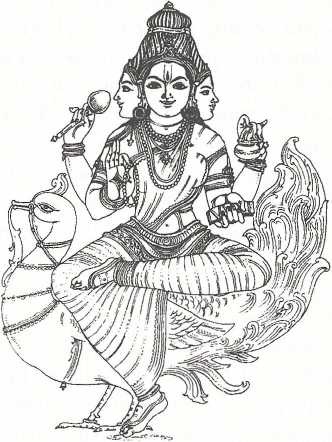Talk:Brahmani
Brahmāṇi (‘the spouse of Brahmā’)
According to the Sakti-cult or the cult of the Divine Mother, each one of the major gods of the Hindu pantheon has his śakti or power, portrayed as the female consort or counterpart, with a similar form, weapons and vehicle. Brahmāṇi, also known as Brāhmī, is the śakti of Brahmā, the four-faced god of creation.
According to the Durgāsaptaśatī, one of the basic texts of the Sakti-cult, when Kauśikī Durgā was fighting the demon Raktabīja—whose blood, if spilled, could produce demons similar to him—she mani¬fested out of herself seven emanations.
These are usually called the Saptamātṛkās or ‘Seven little Mothers’. Brāhmī or Brahmāṇi is the first among them.
According to the Matsyapurāna when Brahmā was in deep meditation, his pure body divided itself into two halves— male and female—and the female deity came to be known as Brahmāṇi, Sāvitrl, Sarasvatī and īatarupā.
Iconographical works describe her as having four faces and six arms. Her colour is piṅgala or tawny. She wears a deerskin as an upper garment. She holds the rosary and a wooden spoon (sruva) as also a book and a water pot in four hands. The other two hands display the abhaya and the varada mudrās, signifying the giving of protection and boons asked for. She rides on a swan.


